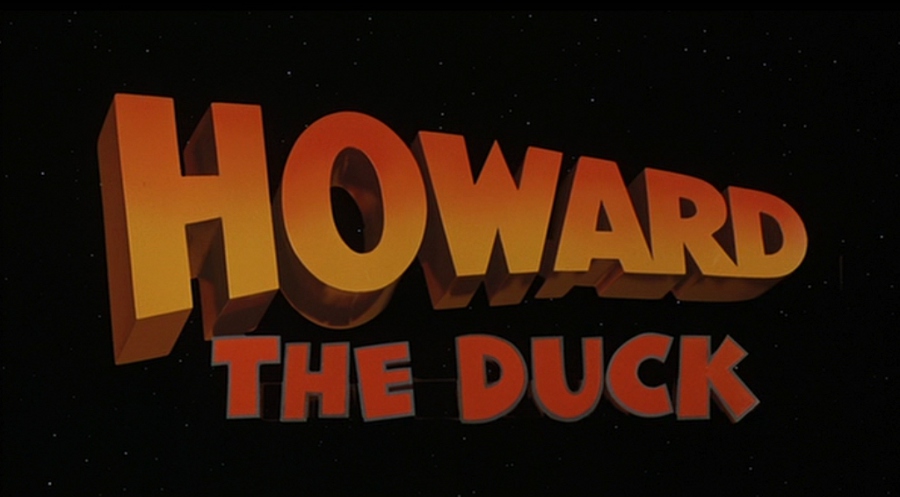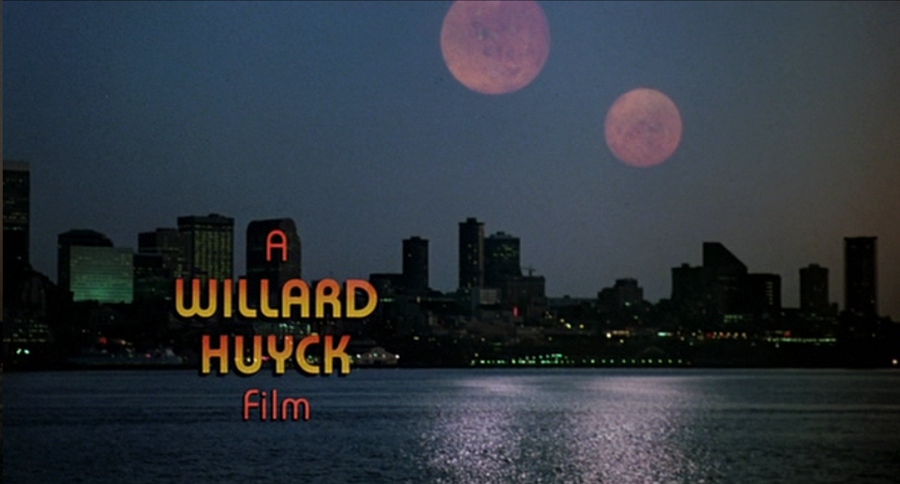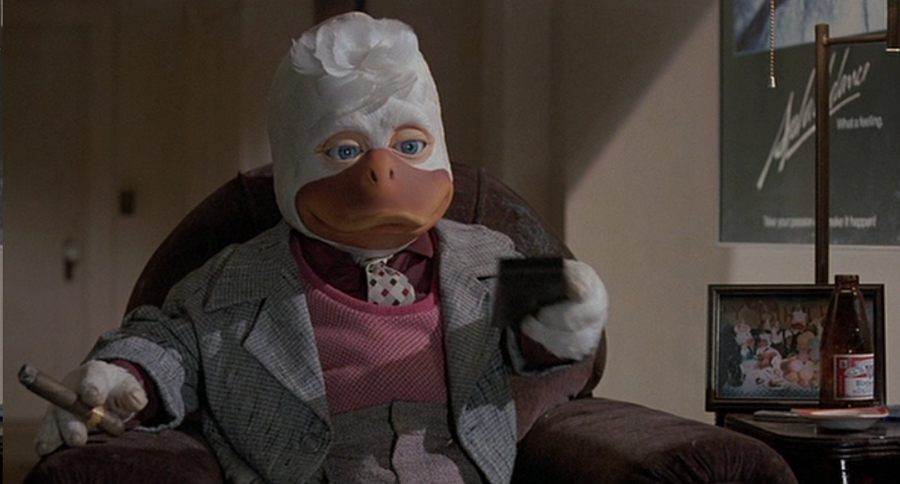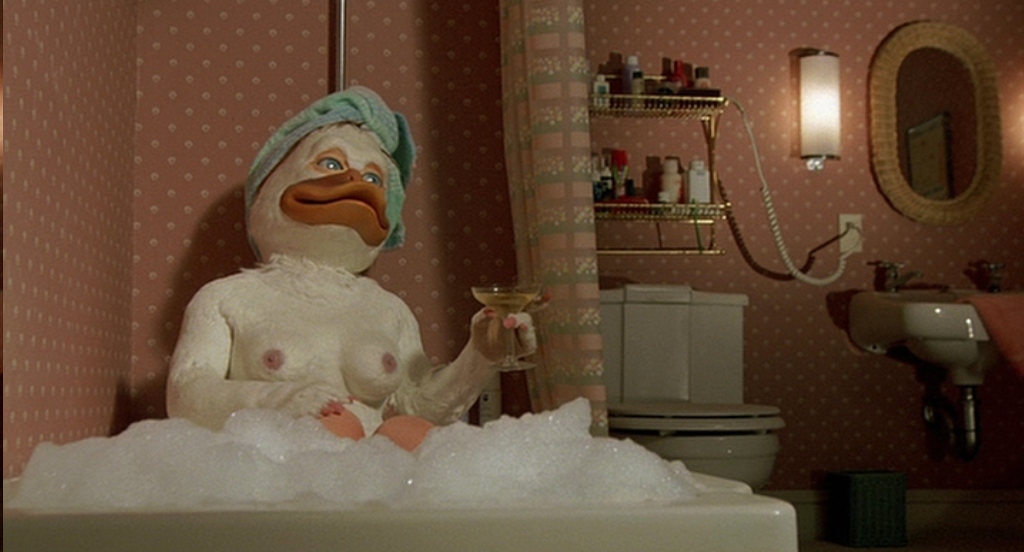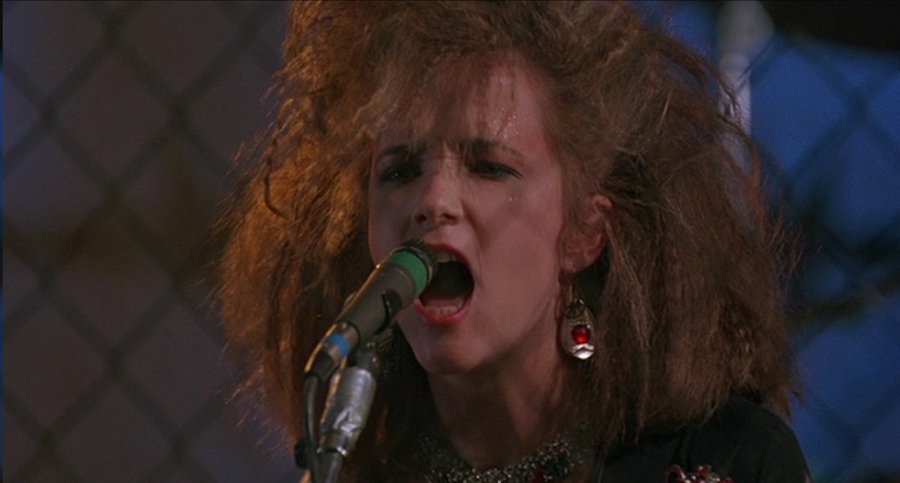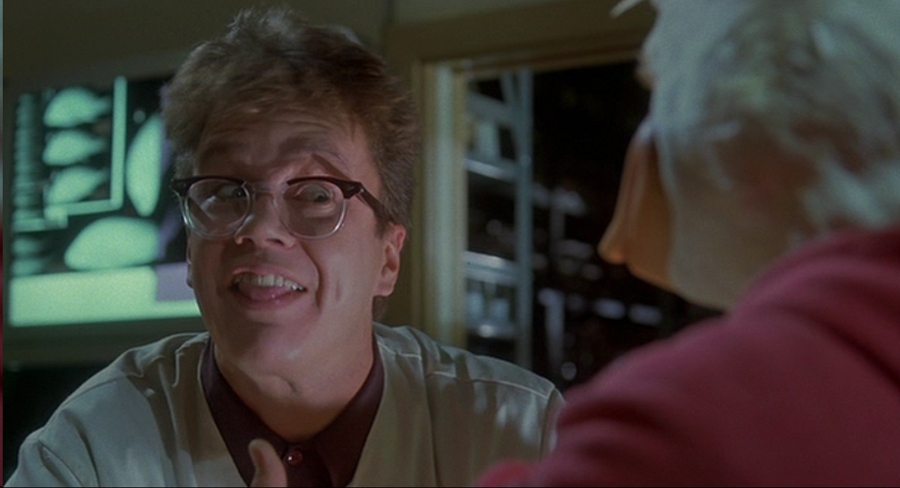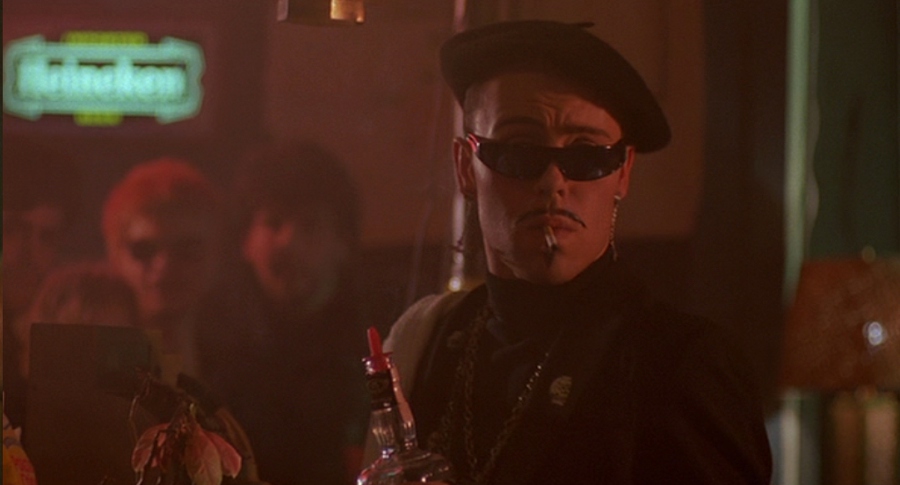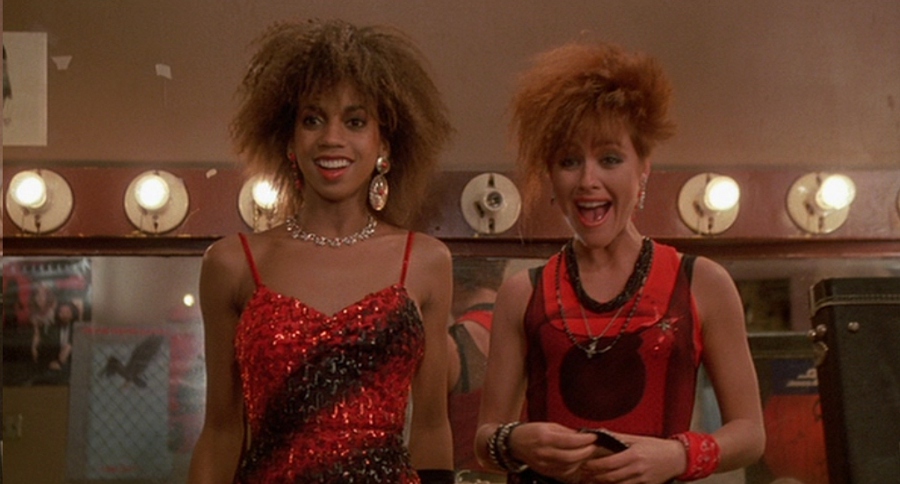Besides co-creating Omega the Unknown, Steve Gerber also wrote what some consider the defiinitive run of issues of Marvel’s Man-Thing. And in one of Gerber’s Man-Thing stories, he introduced a talking humanoid duck named Howard, who went on to star in his own series, Howard the Duck. And in 1986, Howard the Duck became the first Marvel character to be adapted to the big screen (with the exception of Captain America, who had appeared in a Republic serial in 1944). Not Spider-Man, not the Fantastic Four, not the Hulk: Howard the Duck.
The film was produced by George Lucas, who hired his American Graffiti co-writers, Willard Huyck and Gloria Katz, to write and direct. The result was what some have called the worst film of all time.
So how bad is it? Strap in and let’s find out.
The opening shot lets us know it’s a George Lucas production with a subtle nod to Star Wars.
Only this time it’s two moons instead of two suns. And I love the double reflections on the water.
We see someone coming home to a dark apartment, and it’s apparent there’s something wrong: all of the pictures and movie posters in the apartment depict ducks, along with bird puns (like the Raiders of the Lost Ark parody poster titled Breeders of the Lost Stork). Although they didn’t make everything a parody; one of the books on Howard’s shelves is Traitor’s Purse by Margery Allingham. The owner of the apartment is Howard T. Duck, according to his mail.
And right off, we can see one of the big problems with the movie: a bland lead character. And yes, part of the problem is simply the technical limitations of putting an animatronic mask on a midget, but the bigger problem is the way they have softened both the visual design and the personality of Howard to make him more appealing. His face is nondescript, and the voice by Chip Zien is yawn-inducing. There are moments of spark, but for the most part, Howard is dull.
So as Howard is drinking a beer and ogling the latest issue of Playduck, suddenly the building begins to shake and Howard’s chair is suddenly yanked backwards through the wall. He smashes through a couple of other apartments, and we see something that no human being should ever have to see in this or any other lifetime. Duck nipples.
She also has hair under that towel, which is another weird aspect of Duckworld–some ducks have hair. Â Howard is dragged up into space and into a wormhole, where narrator Richard Kiley talks about the vastness of the universe as the title appears. And if you look closely at the title above, you can see a support strut between “the” and “Duck,” because they built the title as a physical model so they could rotate it.
Howard ends up crashing down to our Earth in an alley, landing in an easy chair much like the one he was grabbed from (but filthier). He is found by some weird-looking punks and dragged into a club where a band called Cherry Bomb is playing, led by Beverly Switzler (Lea Thompson). Â I may be in the minority, but I really like the songs Thomas Dolby wrote for the film, and I think Lea Thompson does a really good job on them. She has a powerful voice, and the movie was made before the advent of the modern diva, so it’s without endless tuneless trilling, thank God.
Howard is thrown out of the club and has a series of nightmarish adventures which end with him hiding from the world in a garbage can. He comes out to save Beverly, who’s being harassed by a couple of morons (randomly harassing morons are a continuing feature of the script).
Howard drives away the morons with his mastery of quack fu. Yes, it’s a lame gag, but it’s actually Gerber’s lame gag from the comics, where it was a parody of Marvel’s Shang Chi, Master of Kung Fu. But you’re right, it’s lamer here, divorced from its context.
Beverly thanks Howard and takes him back to her place, where they awkwardly get to know each other. She says she knows a scientist who might be able to help Howard get back home. Then after Howard goes to sleep, she goes through his wallet–duck photos, credit cards with lame puns, and this.
Yeah, there’s a host of cheap gags to be made here. I can’t pick just one, so fill in three or four of your own, then join me in the next paragraph.
The next morning, Howard takes Beverly to see her friend Phil.
Yeah, although I don’t think the movie is quite as bad as everyone says, I don’t thank it for inflicting Tim Robbins on me. Phil’s a lab assistant at a natural history museum, and he thinks he’s going to get rich by discovering Howard. Howard doesn’t want to be exploited, so he leaves the museum and tells Beverly to leave him alone.
He goes on to get a job at a hot tub parlor, but it doesn’t last long. And as he’s wandering home, he passes the alley with the chair he landed in, across the street from the club where Cherry Bomb is playing. It’s fate. Howard goes into the club and beats up the group’s sleazy manager, with help from an odd bartender who really can’t act.
That’s singer-songwriter Thomas Dolby, who composed the songs for the film. That’s as close as you’ll get to a Stan Lee cameo, because that wasn’t a thing yet.
Howard goes backstage to see Beverly and meet her bandmates, including these two.
The one on the left is Holly Robinson (now Holly Robinson Peete), soon to star with a young Johnny Depp on 21 Jump Street. The girl on the right is Liz Sagal, sister of Katey Sagal from Married… With Children and Futurama. Liz and her twin sister Jean had their own sitcom for a couple of seasons titled Double Trouble, then they went their separate ways to carve out their own careers in show biz. Liz’s latest gig is as a writer and story editor on the FX network series Sons of Anarchy, starring sister Katey and Ron Perlman.
Phil shows up to tell Howard that he thinks he has solved the mystery of Howard’s arrival. He leaves for a secret rendezvous with a colleague who can tell him more. Howard goes home with Beverly.
And so far, it’s been a bland, mostly lame comedy with a few nice moments, but nothing that you could single out as “Worst Movie of All Time” material. But things are about to take a really bizarre turn.
See you next week for Part Two.


